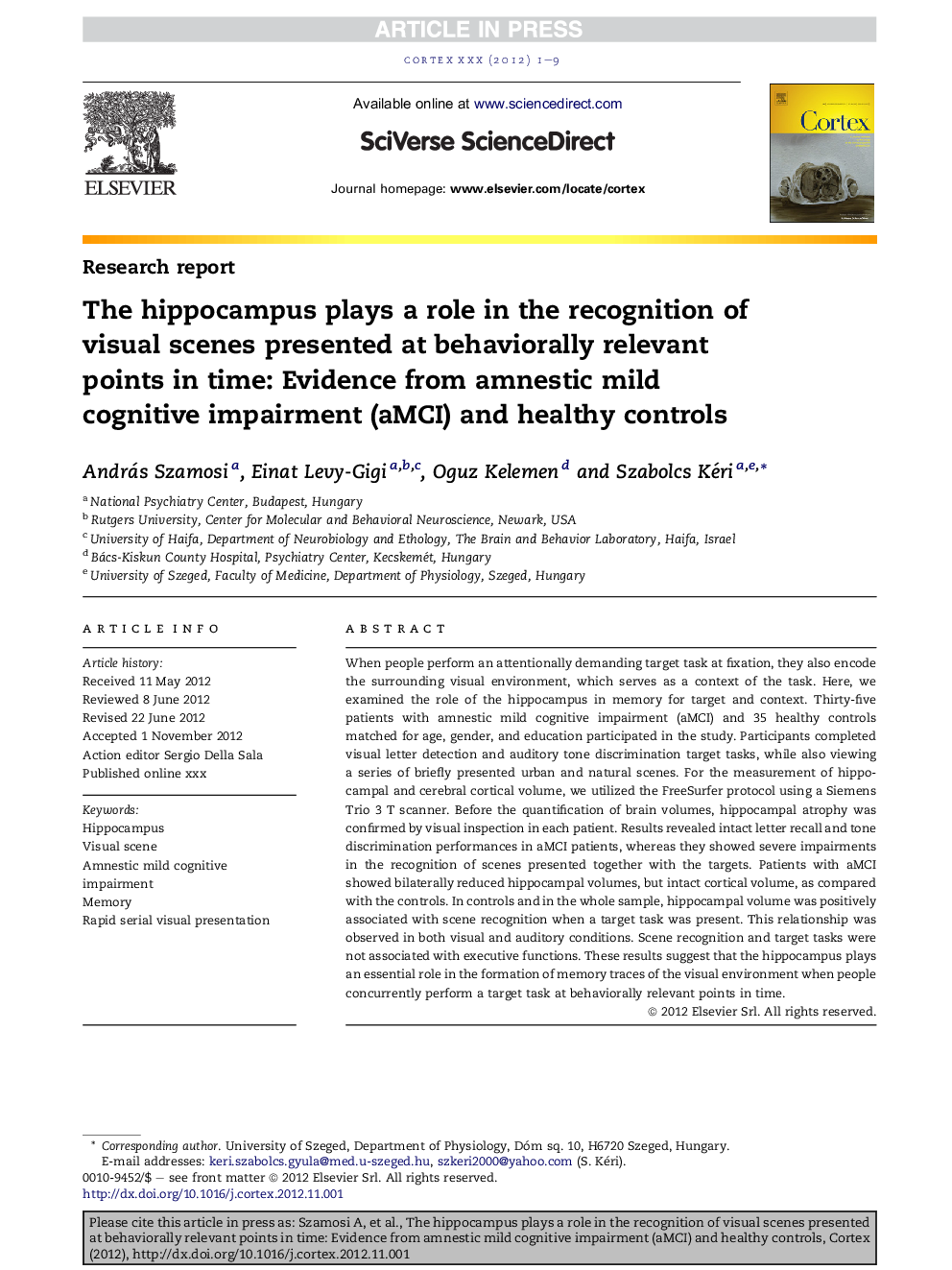| Article ID | Journal | Published Year | Pages | File Type |
|---|---|---|---|---|
| 10463090 | Cortex | 2013 | 9 Pages |
Abstract
When people perform an attentionally demanding target task at fixation, they also encode the surrounding visual environment, which serves as a context of the task. Here, we examined the role of the hippocampus in memory for target and context. Thirty-five patients with amnestic mild cognitive impairment (aMCI) and 35 healthy controls matched for age, gender, and education participated in the study. Participants completed visual letter detection and auditory tone discrimination target tasks, while also viewing a series of briefly presented urban and natural scenes. For the measurement of hippocampal and cerebral cortical volume, we utilized the FreeSurfer protocol using a Siemens Trio 3Â T scanner. Before the quantification of brain volumes, hippocampal atrophy was confirmed by visual inspection in each patient. Results revealed intact letter recall and tone discrimination performances in aMCI patients, whereas they showed severe impairments in the recognition of scenes presented together with the targets. Patients with aMCI showed bilaterally reduced hippocampal volumes, but intact cortical volume, as compared with the controls. In controls and in the whole sample, hippocampal volume was positively associated with scene recognition when a target task was present. This relationship was observed in both visual and auditory conditions. Scene recognition and target tasks were not associated with executive functions. These results suggest that the hippocampus plays an essential role in the formation of memory traces of the visual environment when people concurrently perform a target task at behaviorally relevant points in time.
Related Topics
Life Sciences
Neuroscience
Behavioral Neuroscience
Authors
András Szamosi, Einat Levy-Gigi, Oguz Kelemen, Szabolcs Kéri,
